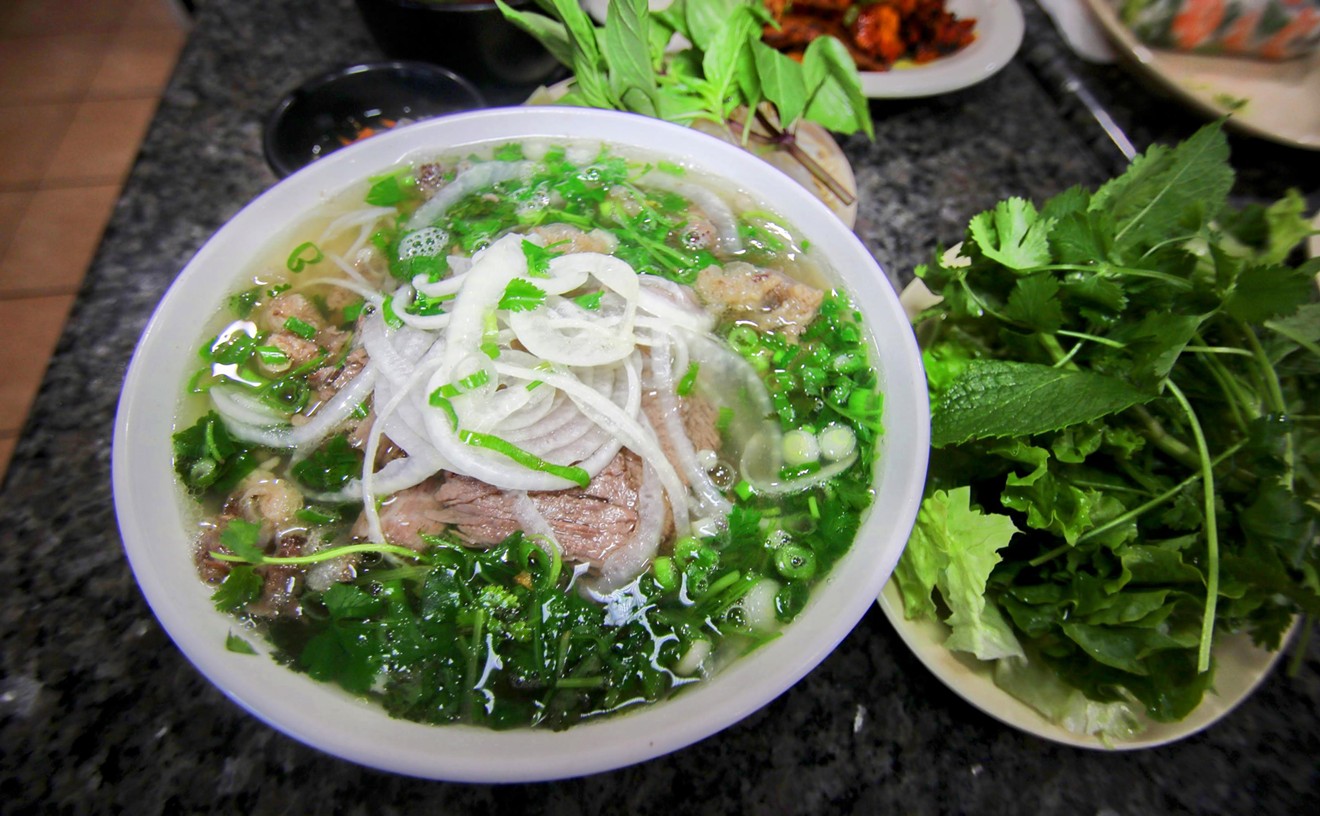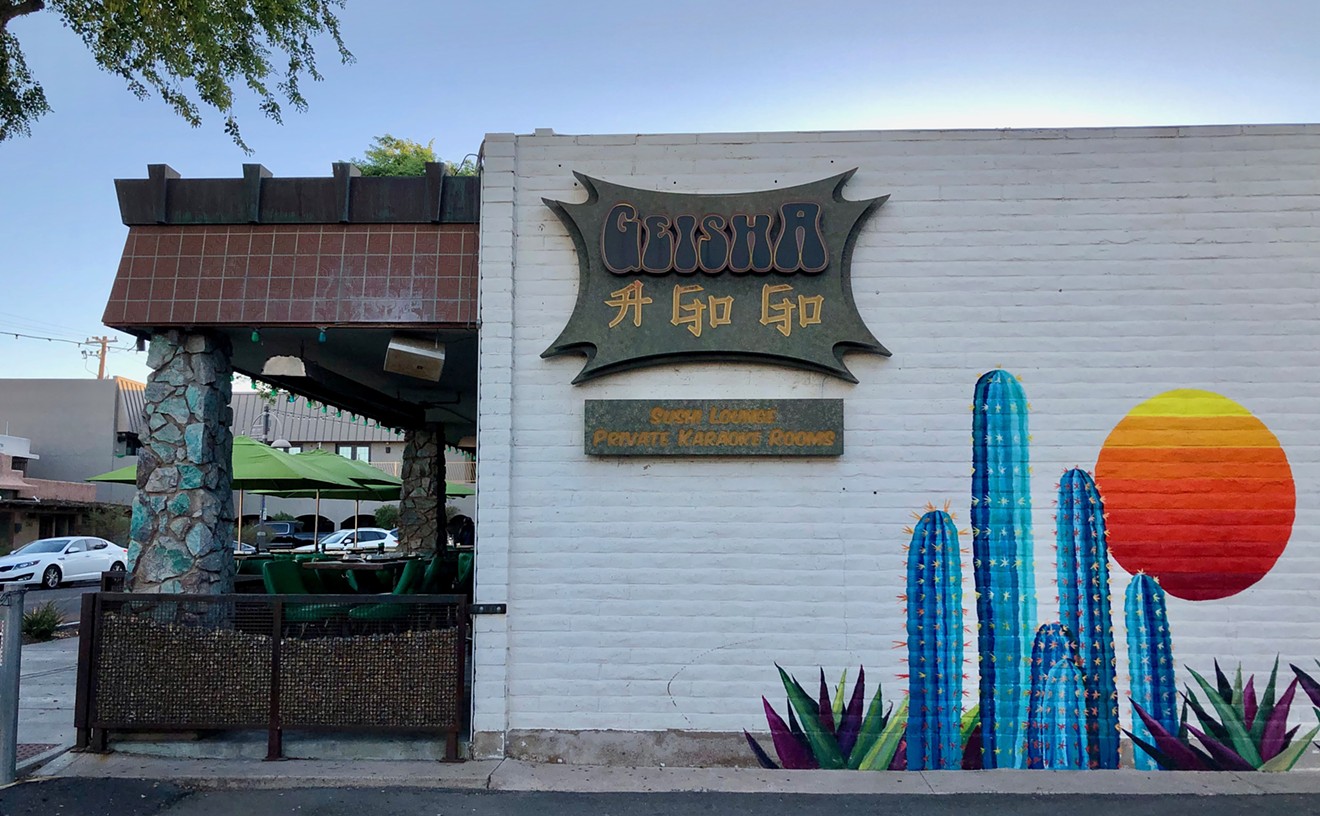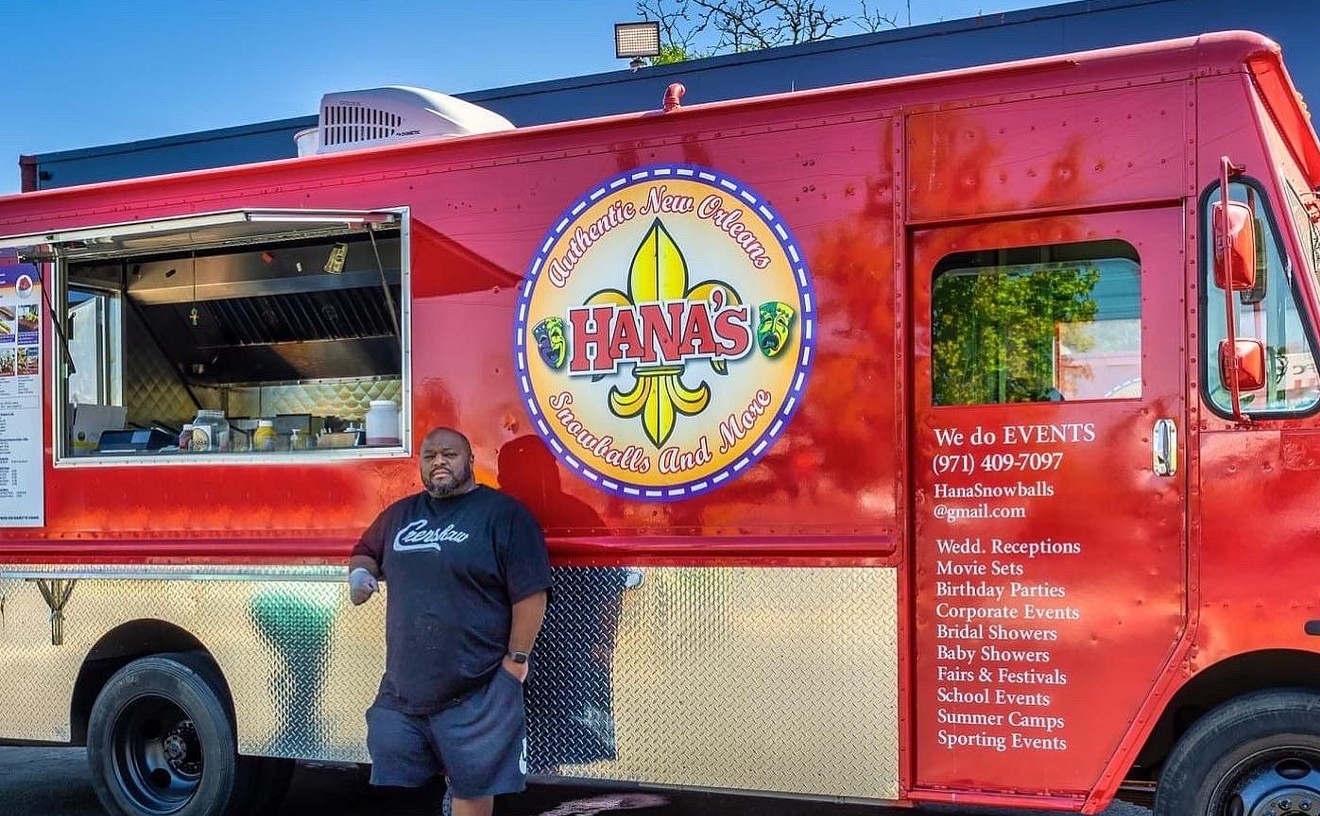Some of the wild foods of the Sonoran are scarce. Saguaro fruit, the truffle of the desert, flashes into brief season in late June and July. Some are hard to procure, like those green-skinned “truffles” that turn sunset colors when ripe; scarlet ocotillo flowers atop tall, spine-coated tendrils; or amaranth, each pinpoint seed encased in a tiny husk. But one of the great foods of our desert is far easier to harvest — and so abundant you may have some growing on your block.
“A lot of people don’t know about mesquite,” says Tamara Stanger, chef at Cotton & Copper in south Tempe. “And it grows everywhere in the city, and most people have it in their yards.”
Stanger, an exponent of foraging and wild foods, starts to gather mesquite pods for culinary use come early summer, the beginning of their season.
“Some branches are low enough that you can grab them and pull the pods off,” she says. “You want to harvest before monsoon, mostly because you’re going to lose it all from the winds.”
Stanger uses mesquite pods in an array of preparations, right in line with her reputation for skill and creativity with wild foods. She started using the desert-adapted legume years ago, when she was baking at Pig & Pickle, where, from time to time, she’d mix mesquite flour into bread dough.
Both cooked and uncooked, bread shaped from mesquite has been a staple of the American Southwest for a long time.
Though mesquite has long been an arboreal icon of the Sonoran, only three of the tree's more than three dozen species are Arizona natives: honey, velvet, and screwbean. These trees thrive in minimal rain thanks to roots that can tunnel 70 feet deep. Their bluish leaflets swish as the monsoon winds pick up, as if about to reveal some great, final secret, and beans madly rattle in their shaken pods.
They smell ashy and pungent when burnt.
They give smoke that imbues food with sharp flavor.
They can be shrubs, dwarf trees, or 20 feet tall. Their pods are eaten by jackrabbits, songbirds, livestock, and other animals, like us.
Past and present, the culinary uses of mesquite begin with its pods: milk-white-to-yellow, speckled, curved, and within easy reach of your hand or stick (with a sheet on the ground to catch them).
These pods have sustained life going back eons before the grocery store, butter stick, and air conditioning. Millennia-old mortars carved into desert rocks tell a story of bygone Hohokam — the ancient indigenous people who mysteriously vanished in the 1400s from where Phoenix sprawls today — pounding mesquite pods into flour. Various tribes have used (and still use) mesquite for other purposes: wood for cooking and making pottery. Gum for fastening arrowheads. Thorns for tattooing. Flowers for eating.
Mesquite flour was (and is) used for cooked and uncooked bread. And for mixing with water, yielding a drink called atole.
Felicia Cocotzin Ruiz, a traditional healer, chef, and indigenous foods activist, uses many parts of the mesquite tree for a variety of purposes, including the pods for food. “Most people think of it kind of as a nuisance,” she says. “For me, it’s an ancestral food, a food that has nourished my family for thousands of years.”
Ruiz, who came to the Valley from Tewa country in New Mexico, harvests mesquite until the early summer monsoons arrive. Unlike many other local harvesters, she also harvests after monsoon season, in the entropic days of late summer and early fall, when rogue, straggling pods that were green when the rains came have at last matured.
She uses pods for syrup, traditional drinks, a porridge like Cream of Wheat, and much more.
Mesquite is unlike a bean, more like a sweetener. “For us, it’s something sweet that tastes like dulce de leche or caramel,” Ruiz says.
Though Ruiz doesn’t mind that wild foods like mesquite are evolving beyond ageless preparations, she worries that mesquite will end up like prickly pear — commercialized, monetized, and blended into drinks with no consciousness of history. “We’re making this food because it’s our umbilical cord to our past, to our ancestors, to everything,” she says. “I was always taught it was the tree of life. I want people to respect it as important.”
To her, that means knowing the history, understanding that some people who harvest mesquite do so while performing sacred rituals, and leaving some for nonhuman animals.
Mesquite trees thrive all over the state, from higher northern elevations, where they’re shorter, to the Salt River Valley. You probably have access to one, but if you don’t, there are a few options for tasting mesquite.
First, you can track down one of the surprisingly few-and-far-between culinarians preparing food made in part with mesquite pods. A foolproof starting point is the mesquite-flour chocolate chip cookie from Super Chunk Sweets & Treats in Old Town, or the mesquite-syrup latte from Azukar Coffee in south Phoenix.
Second, you can buy mesquite syrup (from shops like Cotton Country Jams) or mesquite flour (from millers like Tucson’s San Xavier Co-op).
Third, you can process or grind the mesquite you gather yourself.
Like any foraging, collecting mesquite comes with a set of best practices that should be researched beforehand. The cardinal rule is to skip pods fallen to the ground. But there are others. And that’s why rare services like those provided by Greg Peterson of GrowPHX are useful.
Last month, in conjunction with GrowPHX and Desert Harvesters, Peterson set up his recently purchased mill at the Urban Farm Fruit Tree Program nursery and ground mesquite for all comers. Well, all comers who provided their foraged mesquite and passed a three-part test to ensure safety. (His group had released videos sharing harvesting tips beforehand.)
Peterson’s mill (which belongs to GrowPHX) is a hammermill, a formidable piece of machinery that can handle mesquite’s high sucrose content, which tends to gum up lesser mills.
“We did our first public milling,” he says of the event — which was a beginning but also the last milling of the year, given the imminence of this year’s monsoon. “We milled just about 400 pounds. This was for people just like you.”
Some 26 pounds went to Peggy Sue Sorensen, a “wild foods enthusiast” who teaches classes on mesquite.
Early summer mornings, Sorensen often spends hours gathering pods, but only from the most flavorful trees. She says that some trees have pods that taste great, while others aren’t worth picking from. Sorensen is known among friends for a drink she makes from mesquite pods and water. She calls the coiled, 6-to-8 inch pods “the sugarcane of the desert.”
Peterson agrees. “The best place for it is in baked goods — cookies and cakes and that kind of stuff.”
However, at Cotton & Copper Stanger uses mesquite for a much broader range of dishes. This is part of what she's doing as a chef — taking Arizona’s edible bounty and pushing plants like barrel cactus, acorns, and black walnuts into thoughtful new directions. Mesquite, of course, factors into her novel Arizonan calculus.
“I like to use it in both sweet and savory applications,” Stanger says. “It’s easy to use with desserts just because it has so much sugar.”

A half-chicken brushed with mesquite syrup, with foraged amaranth and watercress, also by Stanger.
Chris Malloy
This is because the mesquite syrup that she makes from pods (and cuts with citrus) is a sweetening agent with a potency similar to molasses, but also “a little nutty.” It can sugar pies in place of sugar.
Stanger also likes to use mesquite flour, often employing it to enrich pie crust. She does this at one part mesquite flour to three parts other flour, cutting the mesquite flour “because it’s super strong and the sugars are so high.” One of the flours she blends it with is milled from Ramona Farms Pima wheat, a heritage grain grown in the Southwest for centuries.
On the savory end, Stanger uses mesquite wood. When smoking fish for dip or squash to put on steak with various ashes (for the new summer menu), she often uses a mixture of mesquite and milder woods, like juniper, pecan, mulberry, or oak. But this doesn’t have the spellbinding thrum of pods that go intensely savory.
Some chefs cut mesquite flour into savory pasta.
Some home cooks use it to jumble bread dough ratios.
Stanger goes full-tilt into savory using sweet mesquite syrup. In one of her own personal favorites that might be on the next Cotton & Copper menu, she finishes spiced, roasted half-chickens with a brushing of stout-brown syrup — austere but vibrant, raw but complex, elemental and enchanting — just like the desert that gives rise to the fabled tree.














